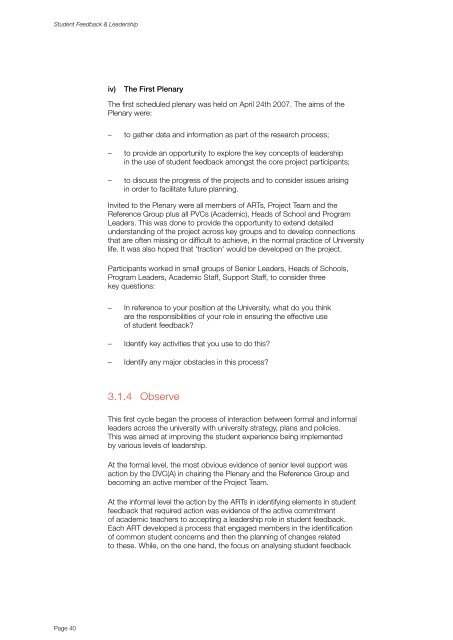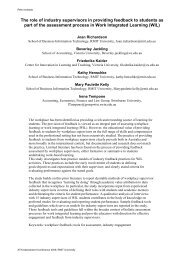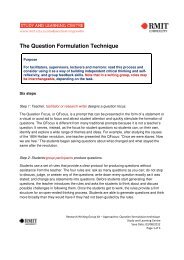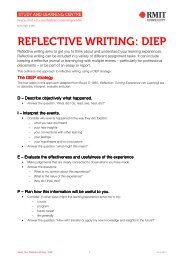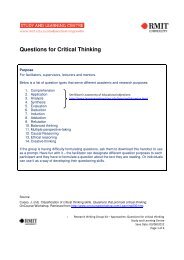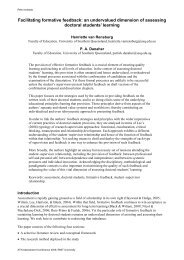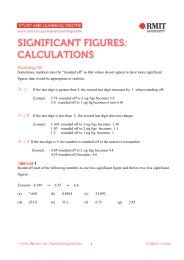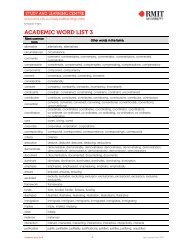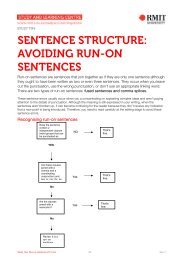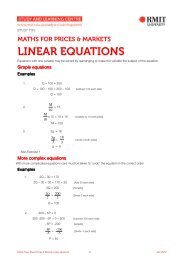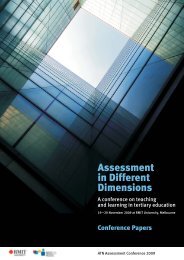student feedback and leadership - Office for Learning and Teaching
student feedback and leadership - Office for Learning and Teaching
student feedback and leadership - Office for Learning and Teaching
Create successful ePaper yourself
Turn your PDF publications into a flip-book with our unique Google optimized e-Paper software.
Student Feedback & Leadership<br />
iv)<br />
The First Plenary<br />
The first scheduled plenary was held on April 24th 2007. The aims of the<br />
Plenary were:<br />
––<br />
to gather data <strong>and</strong> in<strong>for</strong>mation as part of the research process;<br />
––<br />
to provide an opportunity to explore the key concepts of <strong>leadership</strong><br />
in the use of <strong>student</strong> <strong>feedback</strong> amongst the core project participants;<br />
––<br />
to discuss the progress of the projects <strong>and</strong> to consider issues arising<br />
in order to facilitate future planning.<br />
Invited to the Plenary were all members of ARTs, Project Team <strong>and</strong> the<br />
Reference Group plus all PVCs (Academic), Heads of School <strong>and</strong> Program<br />
Leaders. This was done to provide the opportunity to extend detailed<br />
underst<strong>and</strong>ing of the project across key groups <strong>and</strong> to develop connections<br />
that are often missing or difficult to achieve, in the normal practice of University<br />
life. It was also hoped that 'traction' would be developed on the project.<br />
Participants worked in small groups of Senior Leaders, Heads of Schools,<br />
Program Leaders, Academic Staff, Support Staff, to consider three<br />
key questions:<br />
––<br />
In reference to your position at the University, what do you think<br />
are the responsibilities of your role in ensuring the effective use<br />
of <strong>student</strong> <strong>feedback</strong>?<br />
––<br />
Identify key activities that you use to do this?<br />
––<br />
Identify any major obstacles in this process?<br />
3.1.4 Observe<br />
This first cycle began the process of interaction between <strong>for</strong>mal <strong>and</strong> in<strong>for</strong>mal<br />
leaders across the university with university strategy, plans <strong>and</strong> policies.<br />
This was aimed at improving the <strong>student</strong> experience being implemented<br />
by various levels of <strong>leadership</strong>.<br />
At the <strong>for</strong>mal level, the most obvious evidence of senior level support was<br />
action by the DVC(A) in chairing the Plenary <strong>and</strong> the Reference Group <strong>and</strong><br />
becoming an active member of the Project Team.<br />
At the in<strong>for</strong>mal level the action by the ARTs in identifying elements in <strong>student</strong><br />
<strong>feedback</strong> that required action was evidence of the active commitment<br />
of academic teachers to accepting a <strong>leadership</strong> role in <strong>student</strong> <strong>feedback</strong>.<br />
Each ART developed a process that engaged members in the identification<br />
of common <strong>student</strong> concerns <strong>and</strong> then the planning of changes related<br />
to these. While, on the one h<strong>and</strong>, the focus on analysing <strong>student</strong> <strong>feedback</strong><br />
Page 40


